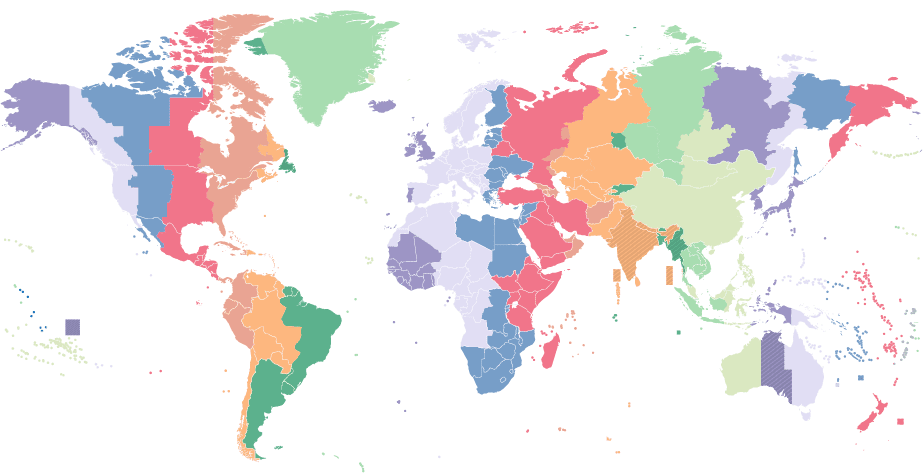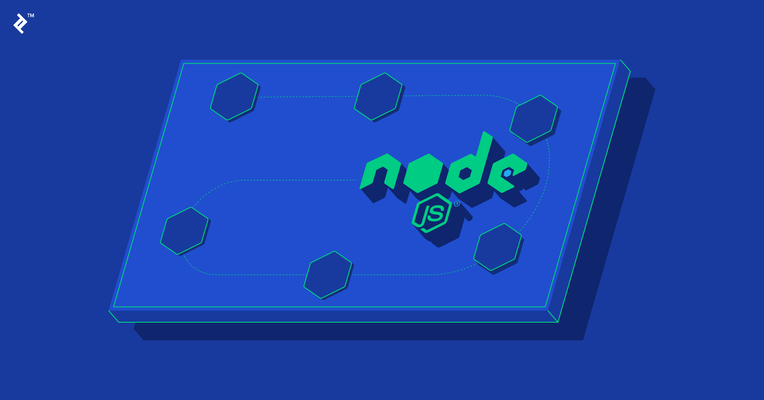Demand for Three.js Developers Continues to Expand
As 3D content becomes a key differentiator in digital experiences, its power to increase engagement and drive conversion is clear. Shopify reports that product pages featuring 3D visuals see an average 94% increase in conversion rates compared to pages without them. As the go-to JavaScript library for rendering 3D content in the browser, Three.js makes these experiences possible across industries, from e-commerce to game development. Web-based projects like Earth 2050 by Kaspersky, Scaling Era by Stripe, and NASA’s Eyes on the Solar System showcase the creative potential of Three.js in action. As a result, organizations increasingly seek to hire Three.js developers to help differentiate their brands via 3D visualizations, configurators, simulations, and virtual showrooms.
Widespread support for WebGL, the web browser technology underlying Three.js, means that companies wanting to offer 3D experiences are no longer limited to Unity and Unreal developers. Instead, they can tap into a pool of Three.js developers—JavaScript programmers who understand 3D graphics and the nuances of web technologies. This convergence of JavaScript, WebGL, and HTML5 makes Three.js development powerful and accessible. However, that accessibility can present a challenge for hiring managers, as it requires vetting a wider pool of candidates whose skills may not meet the demands of production-quality 3D work.
This guide helps hiring managers navigate this challenge by outlining what to look for in a Three.js specialist, how to write an effective job description, and which questions to ask in interviews, empowering you to hire Three.js developers with confidence.
What Attributes Distinguish Quality Three.js Developers From Others?
The better the Three.js developer, the less common their skillset is among JavaScript (or TypeScript) developers. JavaScript fluency is foundational, but quality candidates combine artistic sensitivity, engineering discipline, and an understanding of business needs and how to meet them. They can implement sophisticated 3D scenes that run smoothly across platforms and web browsers using core API features like object hierarchies, geometries, cameras, materials, lighting, and animation systems. Three.js experts can go beyond this, delving into low-level WebGL or writing custom GLSL shader code when needed.
A quality candidate can collaborate fluidly with adjacent specialists, like front-end developers (integrating with frameworks like React.js or Angular) and animators (optimizing assets while ensuring compatibility). They’re used to modern workflows involving tools like Git and approaches like CI/CD. Their communication skills make them as adept at explaining complex computer graphics concepts to non-technical team members as they are at interacting with the communities of the open-source software development tools they use. As visual problem-solvers and workflow integrators, top Three.js developers offer more than the average programmer: They help unify creative, technical, and business goals, making them invaluable in any high-quality 3D web development project.
How Can You Identify the Ideal Three.js Developers for You?
To identify your ideal Three.js developer, begin by developing a list of one-time and ongoing requirements, including desired time frames where possible. Consider the big picture when doing this: What are you building? An augmented reality customizer or configurator for an e-commerce platform? A training simulator? A real-time data visualization dashboard? A lightweight landing-page animation? For simpler projects involving static 3D models or basic visualizations, a junior developer may suffice, especially if appropriate mentorship or technical oversight is available.
Junior developers often have a limited portfolio and less than two years of experience directly involving Three.js. They can follow existing patterns (third- or first-party) but may struggle to debug rendering issues. They often lack experience in cross-browser compatibility and mobile performance optimization.
Mid-level developers, with up to five years of experience using the library, can handle more nuanced work with materials, lighting, camera systems, and animations. They’ll be familiar with integrating Three.js projects into larger web applications and can advocate for proper asset management, modular architecture, and reusable components if these are missing.
Senior developers will have completed several commercial projects and be comfortable with both high-level planning and hands-on execution. They can design full 3D workflows, manage project architecture, and collaborate with stakeholders. When needed, they’ll also have the technical expertise to debug WebGL-level issues, optimize performance across device types, and fine-tune virtual reality (VR), augmented reality (AR), or extended reality (XR) user experiences.
Once the project scope and complexity are clear, consider bringing in a technical specialist to help define the specific challenges of the role. For example, maybe you already have a high-quality 3D application but need smoother interactivity or faster loading. Clarifying these needs helps you screen candidates for real-world experience and problem-solving capabilities. The more specific your required skill set, the easier it is to evaluate candidates accurately. For instance, the CSS approach to responsive 3D layout is largely standardized, so deep CSS expertise may not be necessary. That said, some hands-on CSS debugging skills will be helpful if your project requirements have web page elements becoming part of a 3D scene via Three.js’ CSS3DRenderer—unless you can provide onboarding support or allow time for on-the-job training.
How to Write a Three.js Developer Job Description for Your Project
The first requirement for a Three.js developer job description is determining the job’s primary focus. For example, if you’re looking for someone to build a new Vue.js app from scratch where Three.js functionality only plays a minor role, you might be better off starting with a Vue.js job description template and highlighting Three.js in the role title. Regardless, be sure to call out other vital aspects in the title or first line of the job description, like whether it’s a full-time, part-time, freelance, remote, on-site, or hybrid role, and if it’s fully remote, what your team’s time zone expectations are.
The job description should clearly articulate what the role entails: Begin with a concise project summary, including a product description and how it fits your company’s values and goals. Explain how the 3D web experience will enhance the product and the expertise level you’re looking for. List all known deliverables, expected types of collaboration and reporting, and project management styles. Specify your complete tech stack, including any tooling or workflow services the role will involve. Especially in this age of AI-generated job applications, the more detail you provide—along with the estimated importance of each requirement—the more time you’ll save for yourself and for qualified candidates.
What Are the Most Important Three.js Developer Interview Questions?
Interviewing candidates for a Three.js role can begin with a mix of JavaScript interview questions, followed by targeted Three.js questions. For broader roles involving full-stack development, it also makes sense to include questions on front-end frameworks (like React.js), back-end technologies (like Node.js or Python), cross-platform mobile solutions (like React Native), or other related platforms (like WordPress).
The following questions are designed to help you evaluate both technical depth and real-world problem-solving ability in a Three.js context.
Strong candidates will describe building a lean Three.js scene using efficient data formats (like glTF), compressed meshes, and performance-aware techniques like level-of-detail (LOD) models or THREE.InstancedMesh for rendering many similar objects. They might also reference selective use of post-processing shaders and other optimizations to reduce draw calls and overdraw. Dig for details—vague references to “clean code” without addressing GPU bottlenecks don’t suffice.
What are the best practices for integrating Three.js visualizations into a WordPress-based web application?
Ideal responses will include embedding via shortcodes or custom Gutenberg blocks and strategies for loading Three.js scripts asynchronously to avoid negatively impacting site performance. Strong answers will reference WordPress’s wp_enqueue_script system and address compatibility issues with themes and plugins. If the candidate has used a plugin like ThreeWP, they should be able to comment on its pros and cons compared to custom-coded embedding approaches. Candidates might also mention using REST APIs to feed dynamic data into Three.js visualizations. It is a red flag if candidates demonstrate a lack of awareness that WordPress handles script execution differently from typical single-page applications.
How do shaders work in Three.js, and when might you write a custom one?
Candidates should be able to explain the difference between vertex and fragment shaders: Vertex shaders operate on vertices in 3D space and can reposition them, whereas fragment shaders (also known as pixel shaders), which occur later in the rendering pipeline, determine the final color of each pixel. Developers write both types of shaders in a language called GLSL. Though Three.js includes a variety of built-in materials and modular shader components, custom shaders can be useful for advanced requirements like procedural materials, unusual post-processing effects, or non-standard lighting models.
Can you explain how you would debug and optimize a complex Three.js project experiencing frame drops during animation sequences?
A high-level Three.js developer will approach this from both a JavaScript and GPU perspective. They should first use browser dev tools to monitor frame rate, GPU memory usage, and garbage collection, then use the built-in stats.module.js or a third-party tool such as three-inspect to pinpoint rendering bottlenecks. Quality candidates will be able to explain how to reduce overdraw (perhaps via sorting), limit real-time shadow calculations, use manual matrix updates (for rarely moving objects), and optimize animation keyframe interpolation.
Why Do Companies Hire Three.js Developers?
Companies hire Three.js developers to bring immersive 3D content to the web, going beyond traditional front-end development to create compelling user experiences that stand out in crowded markets. From supporting e-commerce interactivity to enabling simulations in educational or industrial contexts, hiring Three.js developers is a valuable investment: They turn static web apps into dynamic 3D experiences, bringing products, data, and interfaces to life.
A skilled Three.js developer not only implements high-performance visualizations but also bridges design, engineering, and product teams. Their work helps drive engagement and differentiate digital offerings. As web-based 3D technology matures, companies that integrate this expertise early position themselves to lead in visual storytelling and technical innovation.



























